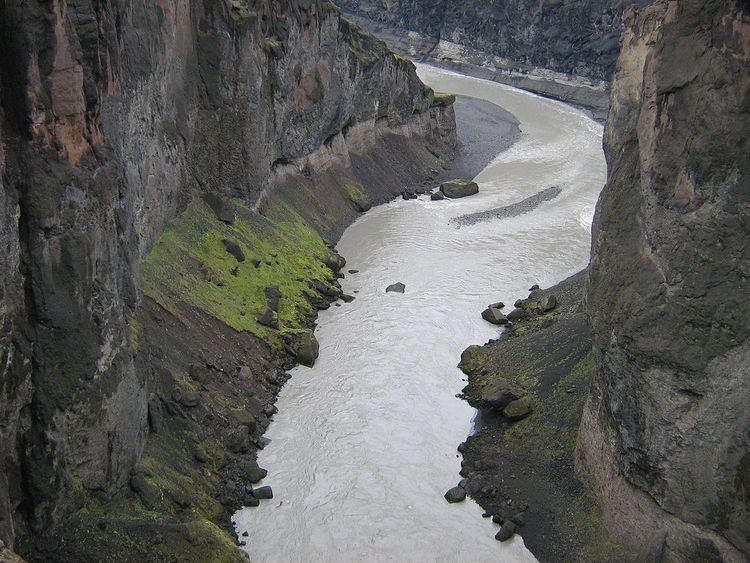 | ||
The electricity sector in Iceland relies primarily on renewable energy: hydro power and geothermal energy, with very minor contributions from thermal power stations. Iceland’s consumption of electricity was seven times higher than EU 15 average in 2008. The majority of the electricity is sold to industrial users, mainly aluminium smelters and producers of ferroalloy. Landsvirkjun is the largest electricity producer. In the retail market largest companies were in 2007: RARIK, Orkuveita Reykjavíkur and Hitaveita Suðurnesja. The electricity production was increased significantly between 2005-2008.
Contents
Consumption
According to Statistics Iceland the total electricity consumption was 7,958 GWh in 2002, 11,480 GWh in 2007, and 17,068 GWh in 2012. The aluminum industry in Iceland used 71% of produced electricity in 2011.
The electricity supply and consumption were equal in 2008: 53.1 MWh per inhabitant when the European union (EU15) average was 7.4 MWh. Iceland’s consumption of electricity was seven times higher than EU 15 average in 2008. The domestic electricity supply promotes use of electricity.
Production
Iceland's electricity is produced almost entirely from renewable energy sources: hydroelectric (70%) and geothermal (30%). Less than 0.2% of electricity generated came from fossil fuels (in this case, fuel oil). In 2012 there was no wind power installed in Iceland. Electricity production increased by 24 MWh/person from 2005 to 2008, an increase of 83%.
Mode of production
Generating electricity in Iceland with geothermal energy has increased significantly in recent years, in response to the rapid expansion in Iceland's energy-intensive industry. The following table shows the installed generation capacity in MW as of the end of the year:
Transmission
The Icelandic Transmission System Operator (TSO) is Landsnet, a company jointly owned by three state-owned power companies: RARIK, Landsvirkjun and Orkubú Vestfjarða. All major transmission construction needs a special permission from the Ministry. The Icelandic TSO is compensated for all costs.
Competition
The Icelandic electricity market is geographically isolated. The market was closed for competition prior to 1 July 2003. Almost all electricity was supplied by Landsvirkjun and sold through regional distribution companies. Landsvirkjun had a monopoly position on investment in generation. Full market opening began in 2006 e.g. with the opportunity to switch supplier. Contracts for large scale energy users were in general long term, up to 30 years with options for extension.
Landsvirkjun, the largest electricity producer, had 76% annual production in 2007.The majority of the electricity is used in industry, mainly aluminium smelters and producers of ferroalloy. Landsvirkjun does not participate directly in the retail market for households and smaller businesses. In the retail market the main companies are RARIK, Orkuveita Reykjavíkur and Hitaveita Suðurnesja.The last two have also entered into the market for energy intensive users. The households heated with electricity, not many, receive subsidies to make their heating costs comparable to hot water heating.
Orkusalan was established as a joint venture between Landsvirkjun, and two large operators. The companies involved produced the majority of all electricity and own ca 98 per cent of the hydro power generation. The joint venture would have provided ca 40 per cent of the household electricity. According to the Icelandic Competition Authority the joint venture would have strengthen a dominant position of Landsvirkjun. The parties suggested that Landsvirkjun would pull out of the project, and subject to that condition the merger was allowed to proceed. Orkusalan commenced operation without Orkubu Vestfjarða. The later development should be updated.
